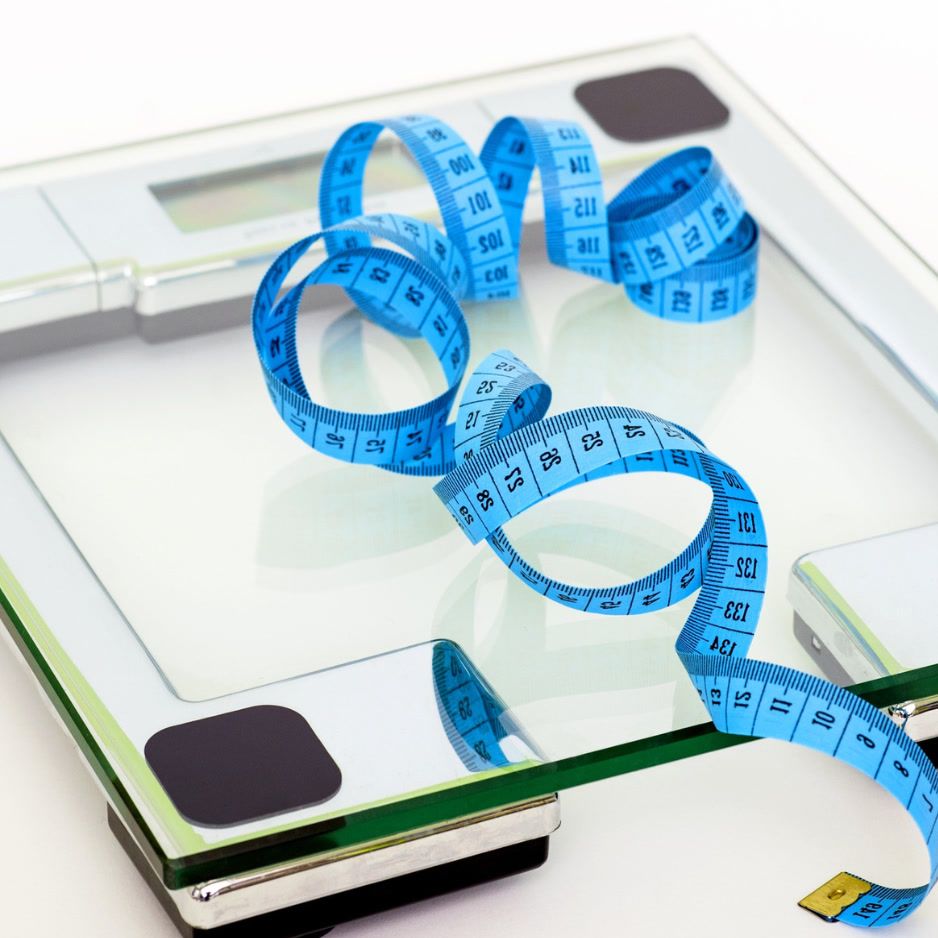18% Body Fat: Understanding Its Impact and Next Steps
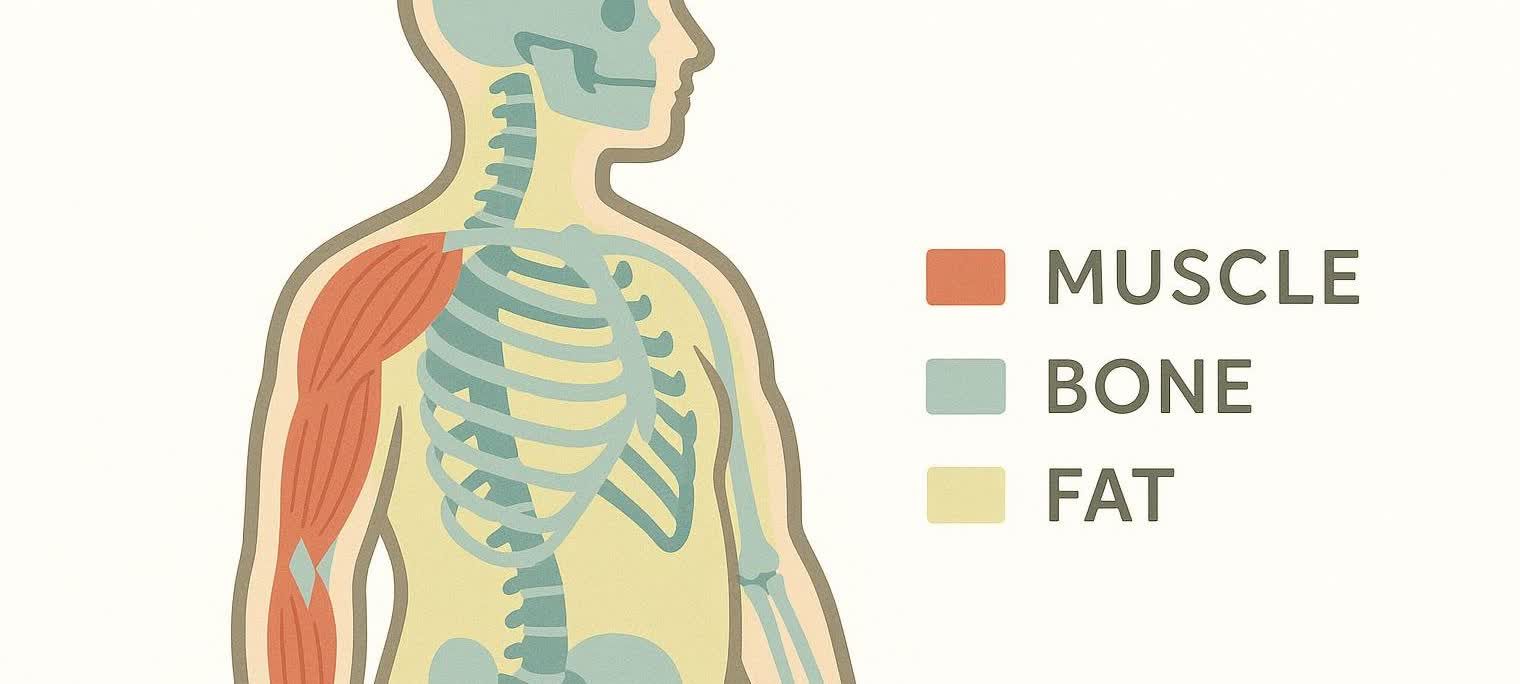
18% Body Fat: How It Looks, Health Impact, and Your Next Move
Trying to wrap your head around 18% body fat? Maybe you typed “18 body fat” into Google after your smart scale flashed the number.
Now you’re wondering what it actually means and what to do next. Good news: you don’t have to be a nutrition scientist to figure it out. This guide breaks down 18% body fat in plain language and gives you beginner-friendly steps to move forward.
In this article you’ll learn:
- What 18% body fat looks like on men and women
- Why 18% usually lands in the healthy zone—but isn’t yet “photo-shoot shredded”
- How beginners can measure body fat accurately (spoiler: DEXA is the gold standard)
- The biggest factors that lower body fat effectively—and safely
- A simple cut-vs-bulk framework so you know whether to diet, maintain, or build muscle next
Body Fat 101: Quick Definitions for Beginners

- Body-fat percentage is the proportion of your weight that comes from fat tissue. The rest is lean mass—muscle, bone, organs, and water.
- Visceral fat hides around your organs. Too much raises heart-disease and diabetes risk.
- DEXA scan (dual-energy X-ray absorptiometry) is a low-dose X-ray that separates fat, lean tissue, bone, and visceral fat with ±1–2 % accuracy.
Think of DEXA as the “HD photo” of your body composition, while smart scales and tape measures are more like fuzzy selfies.
Quick Facts: 18% Body Fat at a Glance
| Metric | Men | Women |
|---|---|---|
| ACE category | “Average” range (18–24 %) | Upper end of the “Athlete” range (14–20 %) |
| Visceral-fat guideline | Low cardiometabolic risk if waist < 40 in (102 cm) | Low risk if waist < 35 in (88 cm) |
| Typical look | Soft outline of upper abs; arm and shoulder muscles show shape in good lighting | Mild ab shadow; clear shoulder and leg definition when flexed |
| Common next move | Cut for deeper ab lines or lean-bulk for more muscle | Maintain or lean-bulk; aggressive cuts can affect hormones |
Sources: ACE body-fat chart • NHLBI waist guidelines
1. What Does 18% Body Fat Look Like in Real Life?
Fat distribution changes with age, hormones, and training history, but BodySpec’s DEXA database shows some common markers:
Male, mid-20s
- Light vein visibility in the forearms during exercise
- Two-pack outline up top; softer layer over lower abs
- Noticeable shoulder “caps” even at rest
Female, early-30s
- Shoulder and quad lines pop when flexed
- Abdominal area looks flat but not sharply segmented
- Regular menstrual cycle for most, indicating healthy energy balance
Male, 40-plus
- Arm and shoulder separation still visible but softer
- Love-handle area may hold extra fat even if total is 18 %
- Upper-back posture can affect how lean you look in photos
Want to see your personal fat map? Book a BodySpec DEXA scan and get a regional breakdown.
2. Is 18% Body Fat Healthy?
According to the American Council on Exercise (ACE), obesity thresholds start at 25 % body fat for men and 32 % for women. Because 18% body fat sits well below those cut-offs—and below the waist-circumference limits published by the National Heart, Lung, and Blood Institute (NHLBI)—it’s generally considered a low-risk zone for chronic diseases linked to excess body fat (ACE • NHLBI).
Keep in mind, though, that two people at 18 % can carry very different amounts of visceral fat—the deeper kind tied to cardiometabolic risk. A DEXA scan provides the clearest picture.
Related reading: Visceral Fat Level Chart: Understanding Your Health Risks
3. How Beginners Can Measure 18% Body Fat Accurately
| Method | Accuracy Window | Good For | Watch Outs |
|---|---|---|---|
| DEXA scan | ± 1–2 % | Anyone who wants the full story (fat, muscle, bone, visceral) | Requires an appointment |
| 7-site skinfold calipers | ± 3–4 %* | Budget-friendly bodybuilders | Tester skill matters |
| Smart scale (BIA) | ± 5–8 % | Quick daily check-ins | Hydration swings skew results |
| U.S. Navy tape method | ± 5 % | Zero-cost sanity check | Overestimates lean folks |
*Assuming the tester is experienced.
Step-by-step instructions here: How to Calculate Body Fat Percentage: A Guide
4. The Biggest Factors That Drive Body-Fat Loss
If your goal is to drop from 18 % to leaner territory, focus on these high-impact levers first. Nail them consistently before chasing advanced hacks.
- Caloric Deficit (Energy Balance)
Weight (and fat) drops when you eat fewer calories than you burn. A 15–20 % deficit is gentle enough for beginners to sustain—think 300–500 calories below maintenance for most adults.

- Protein Intake
Aim for 0.7–1.0 g per pound of body weight. Protein preserves muscle while you diet and boosts satiety, making the deficit feel easier. - Strength Training
Lifting weights 2–3 times per week signals your body to keep muscle and burn fat instead. Compound moves like squats, presses, and rows give the best return on time.
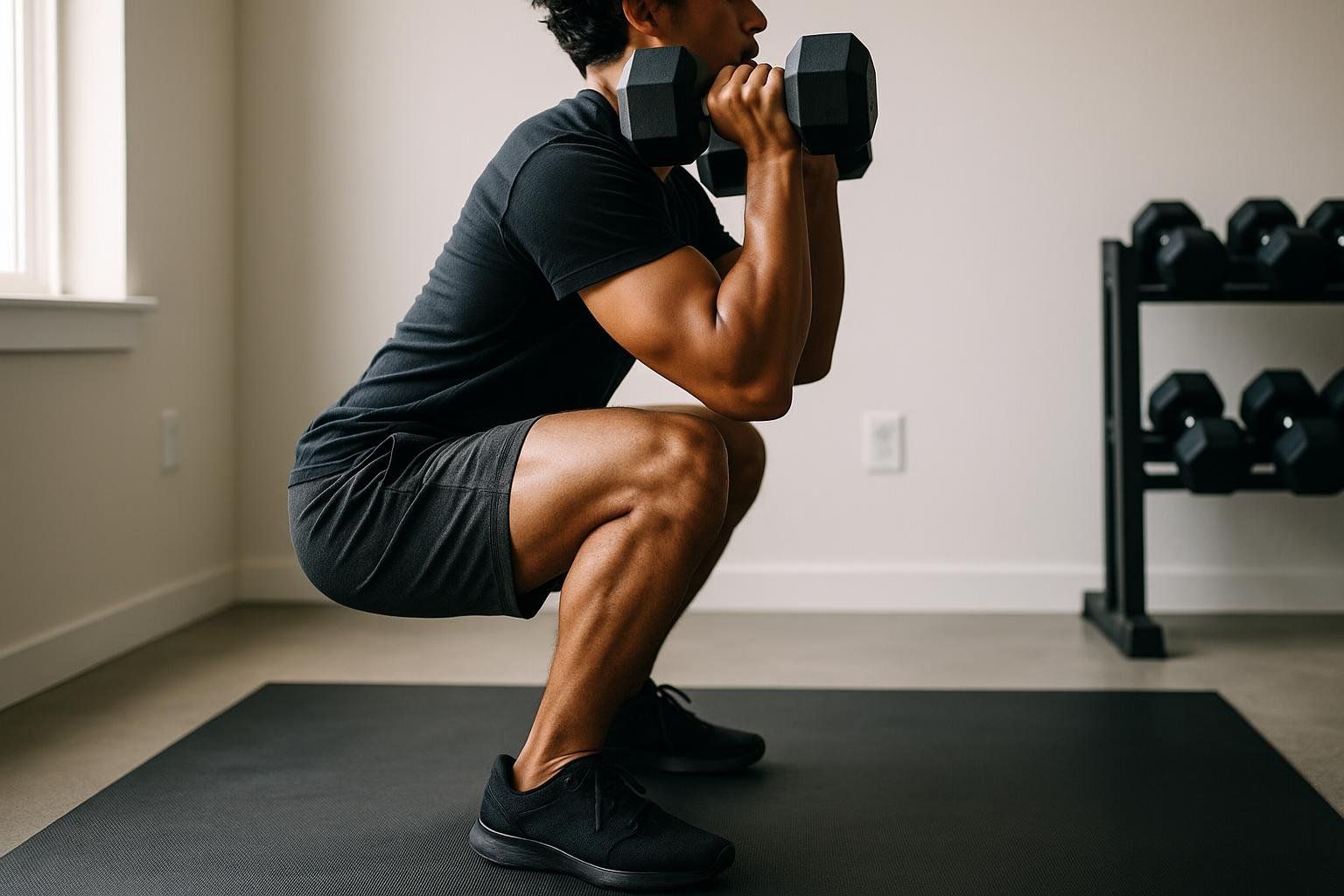
- Daily Movement (NEAT)
Non-exercise activity (steps, chores, playing with kids) can quietly burn hundreds of calories. Shoot for 7,000–10,000 steps per day. - Quality Sleep
Less than 7 hours raises hunger hormones and lowers recovery. Prioritize a consistent bedtime and a dark, cool room.
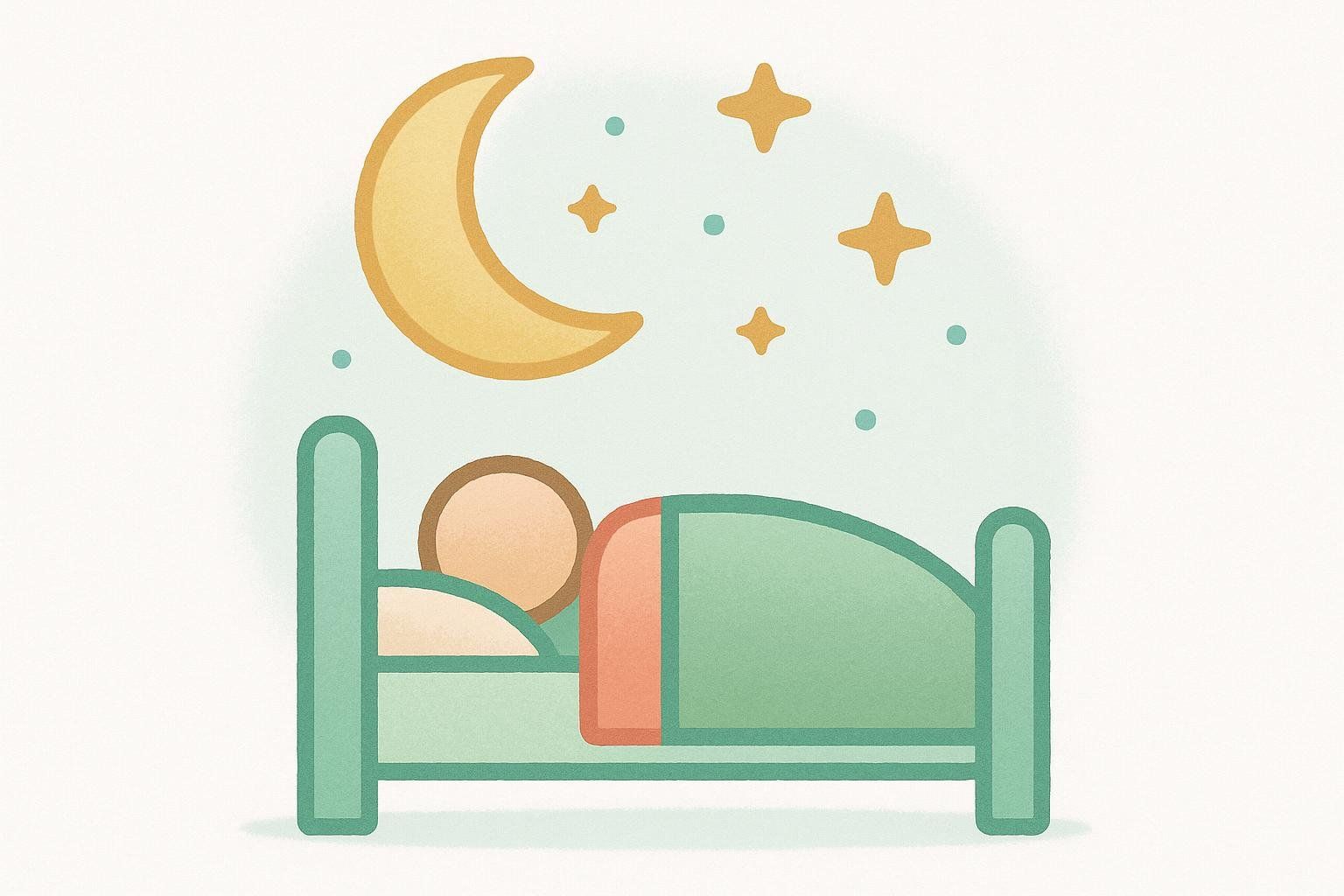
- Stress Management
Chronic stress elevates cortisol, which can increase appetite and abdominal fat storage. Simple tactics: 5-minute breathing breaks, outdoor walks, or journaling. - Consistency Over Perfection
An 80 % adherence rate beats a “perfect” plan you abandon. Pick habits you can repeat on busy weeks.
Pro tip: Instead of slashing 500 calories overnight, start by tracking what you already eat for a week. The data highlights painless cuts—like switching a sugary latte for black coffee.
5. Should You Cut or Bulk at 18%?
Use this beginner-friendly decision tree:
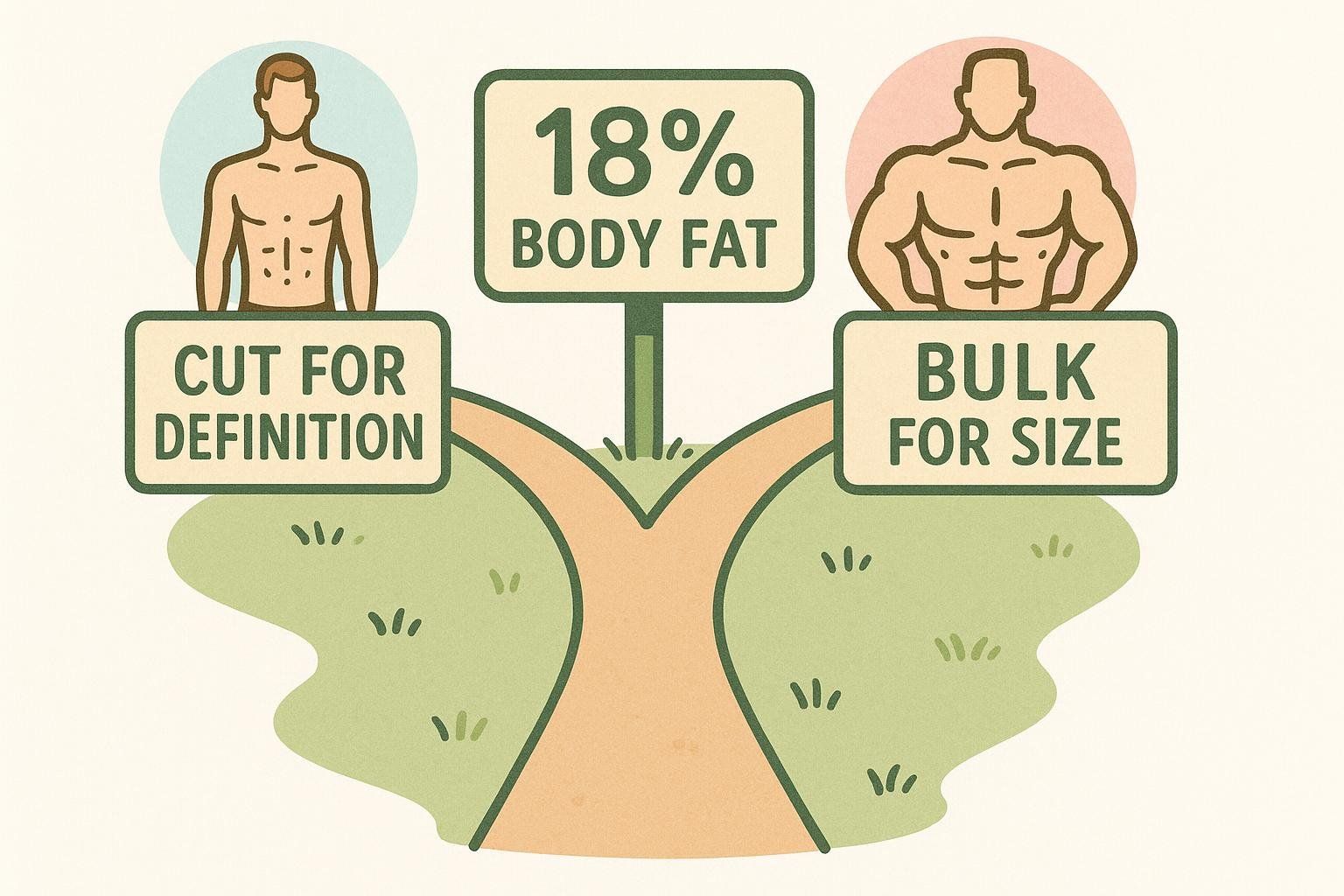
- Do you want visible abs ASAP?
• Yes → Start a cut until you approach 12 % (men) or 17 % (women).
• No → Go to #2. - Do you feel skinny in clothes but soft without them?
• Yes → Try a lean bulk: small calorie surplus + strength training to add muscle.
• No → Maintain at 18 % while you build habits and strength.
Deep dive: Cutting vs Bulking: Which Is the Best Bodybuilding Strategy?
6. Starter Nutrition Plan (Two Scenarios)
If Cutting
- Calories: 20 % below maintenance (use a free calculator or get an RMR test).
- Protein: 0.8–1.0 g per pound body weight.
- Carbs & Fats: Fill the rest to preference—just keep at least 25 % of calories from fat for hormonal health.
- Easy Swaps: soda → seltzer, mayo → mustard, takeout → meal-prep bowls.
If Lean-Bulking
- Calories: 200–300 above maintenance.
- Protein: 0.7–0.9 g per pound body weight.
- Carbs: Fuel workouts—3 g per pound is plenty for most.
- Fats: Fill remaining calories, focusing on nuts, avocado, olive oil.
7. Beginner Training Blueprint
| Goal | Strength Sessions | Cardio | Key Tips |
|---|---|---|---|
| Cut | 3 full-body workouts | 2–3 brisk walks or bike rides | Keep lifts heavy (5–8 reps) to retain muscle |
| Bulk | 4 workouts (upper/lower split) | 1–2 light cardio sessions | Add 1–2 sets per muscle every 4 weeks |
Need more detail? Check out Body Fat Percentage for Visible Abs: A Coach-Scientist Guide.
8. Track Progress Like a Scientist—Made Simple
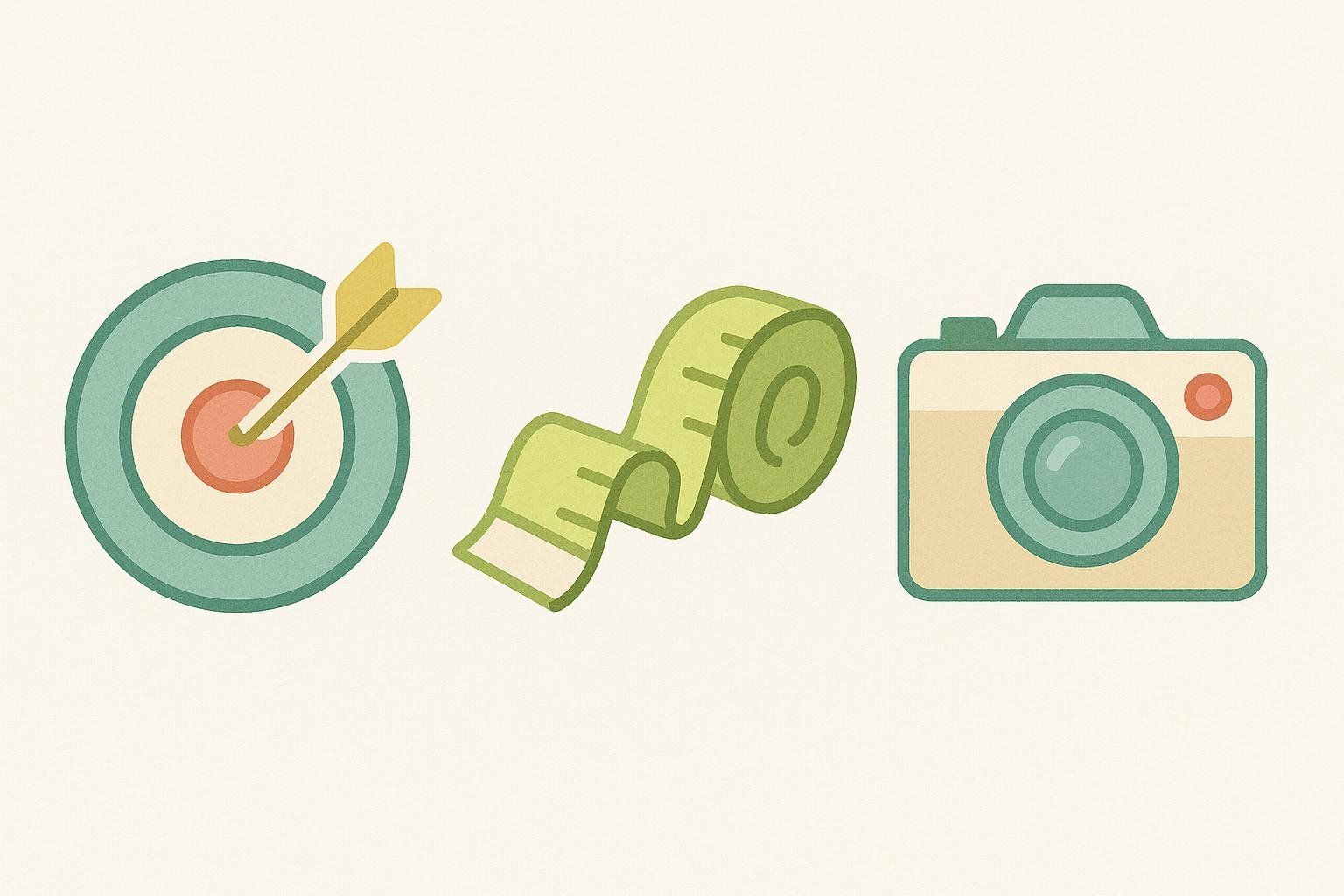
- DEXA scan every 6–8 weeks to confirm fat vs. muscle shifts.
- Take waist measurements weekly. Same tape, same spot, morning before breakfast.
- Snap front/side/back photos under the same lighting each month.
- Log your workouts—weight lifted and how many reps felt challenging (RPE scale).
FAQs for First-Timers
Can I see abs at 18% body fat?
Some men will see a faint two-pack; most women will see a flat tummy without deep grooves. Full six-packs usually emerge below 12 % (men) and 18 % (women).
How fast can I drop from 18% to 15%?
For me, a safe, beginner-friendly pace is about 0.5 % of body weight per week—roughly 1 lb (0.45 kg) for a 200-lb person. Expect 4–6 weeks with consistent habits. 18% is already on the low side for women.
Do I have to give up carbs to lose fat?
No. Total calories and sufficient protein matter more. Carbs can actually improve workout performance, helping you keep muscle while losing fat.
Is 18% low enough to stay healthy year-round?
For most people, yes. It’s low enough to lower health risk but high enough to maintain energy, hormones, and social flexibility.
Key Takeaways
- 18% body fat is generally healthy, especially if your waist is in the recommended range.
- Beginners should focus on calorie control, protein, strength training, daily movement, sleep, and stress management—the big levers that drive fat loss.
- Decide cut vs. bulk by clarifying whether seeing abs or adding muscle excites you more right now.
- Measure objectively—DEXA + tape + photos—so you know if your plan is working.
Ready for real numbers—not guesses? Book a BodySpec DEXA scan and see exactly where you stand today.


